21 Refrigerator Organization Hacks for Fresh Fruits and Veggies (You’ll Thank Me Later!)
Are you tired of rummaging through your fridge, only to find wilted greens and mushy berries?
With a little creativity and some clever fridge organization hacks, you can transform your refrigerator into a vibrant preservation station for fresh fruits and vegetables.
Let’s dive into these 21 innovative ideas that will not only save you space but also keep your produce fresh for longer. Each tip is designed to maximize efficiency and help you say goodbye to spoiled food for good. Prepare to take notes because you’ll definitely want to implement these hacks right away!
Contents
- 1. Clear Containers for Visibility
- 2. Use Produce Drawers Wisely
- 3. Herb Storage Magic
- 4. The Power of Aluminum Foil
- 5. Freeze for Later
- 6. Use a Salad Spinner
- 7. Smart Shelf Placement
- 8. Keep Your Fridge Clean
- 9. Use a Lazy Susan
- 10. Revitalize Old Produce
- 11. Citrus Preservation Tips
- 12. Use a Food Dehydrator
- 13. Vegetable Broths from Scraps
- 14. Produce Pads for Longevity
- 15. Color-Coding for Easy Access
- 16. Repurpose Old Jars
- 17. Keep Avocados on a Low Shelf
- 18. Composting for Outdated Produce
- 19. Invest in Fridge Thermometer
- 20. Rotate Your Produce
- 21. Embrace Seasonal Eating
1. Clear Containers for Visibility
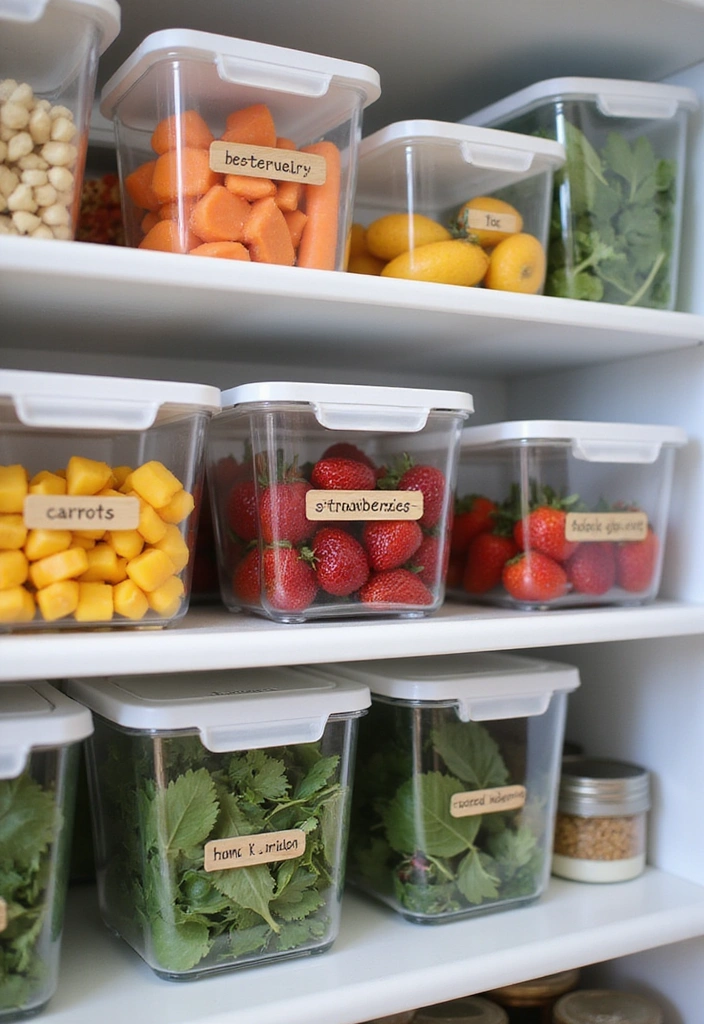
Using clear containers is one of the simplest yet most effective refrigerator organization hacks.
These containers allow you to see what you have at a glance, eliminating the frustration of digging through cluttered shelves. Think about it: who wants to find a random, forgotten zucchini hiding in the back corner?
Choose containers made from BPA-free plastic or glass to store items like berries, grapes, or cut veggies.
– Label each container to make it super easy to identify contents.
– Group like items together — all your salad toppings in one bin and snacking fruits in another.
– Make sure to keep the lids airtight to preserve freshness.
– Regularly check the contents to consume older items first.
You’ll be amazed at how much more organized your fridge feels with just a few clear containers, and you’ll waste less food too!
2. Use Produce Drawers Wisely
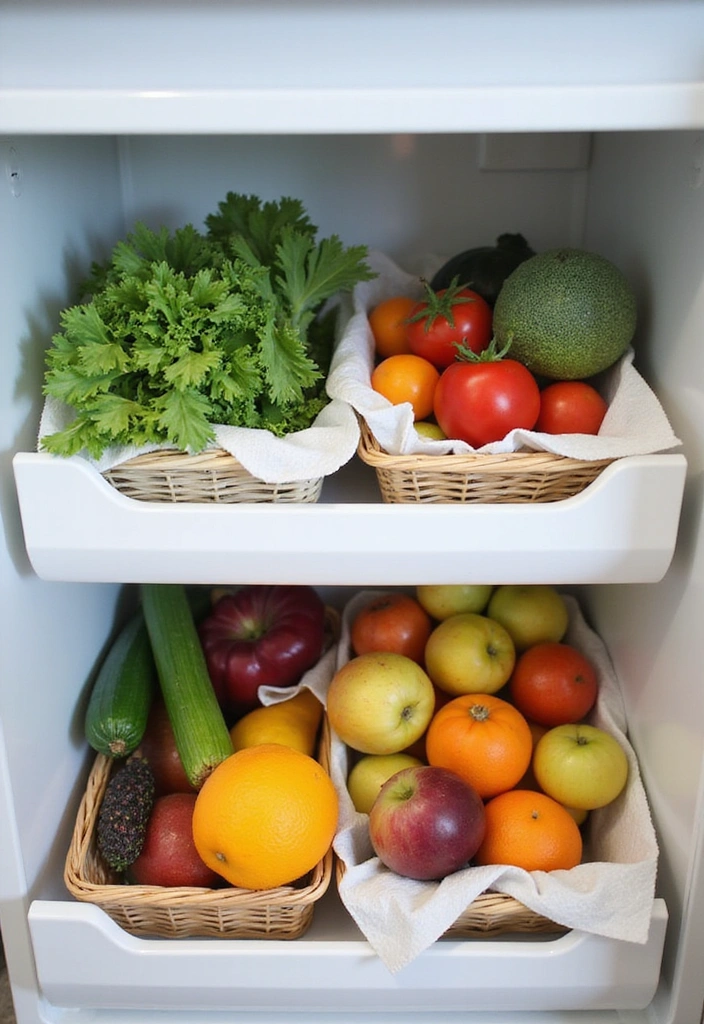
Most fridges come with drawers designated for fruits and vegetables, but how many of us actually use them to their full potential?
Instead of tossing everything into one drawer, consider separating your fruits and veggies. Fruits tend to emit ethylene gas, which can cause veggies to spoil faster, so keeping them apart is crucial for food preservation.
– Assign one drawer for leafy greens and other veggies and another for fruits like apples and oranges.
– Organize by ripeness: keep ripe fruits on the upper shelves while stashing the unripe ones at the bottom.
– A good tip is to line your drawers with paper towels to absorb moisture, keeping your produce crisp.
– Consider using small baskets within the drawers to organize small items like cherry tomatoes or radishes.
Taking advantage of your fridge’s produce drawers can make a world of difference in maintaining freshness and reducing waste.
3. Herb Storage Magic
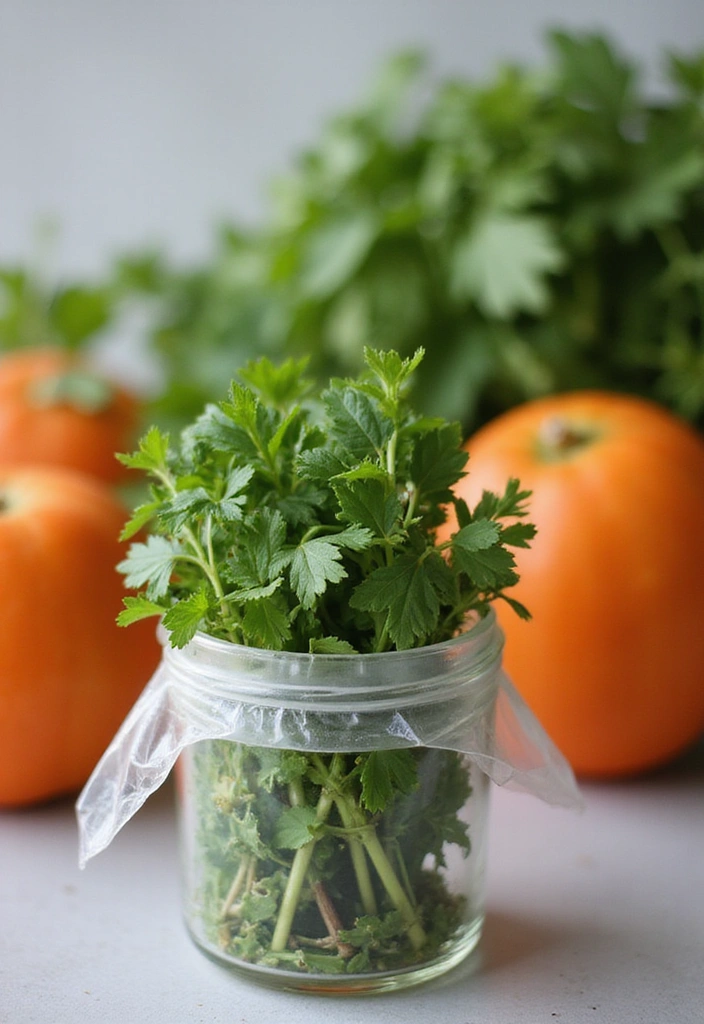
Fresh herbs can elevate any dish, but they also tend to wilt quickly if not stored correctly.
To keep your herbs fresh for longer, consider treating them like flowers. Trim the stems and place them in a small glass of water, then cover them with a plastic bag and store them in the fridge. This method allows them to absorb moisture and stay vibrant!
– Alternatively, store herbs like basil and cilantro upright in a jar with water, and cover loosely with a plastic bag.
– If you have excess herbs, chop them and freeze them in ice cube trays with olive oil for future use.
– Remember to label the cubes so you know which herb is which!
You’ll be surprised at how much longer your herbs last with this simple trick.
4. The Power of Aluminum Foil
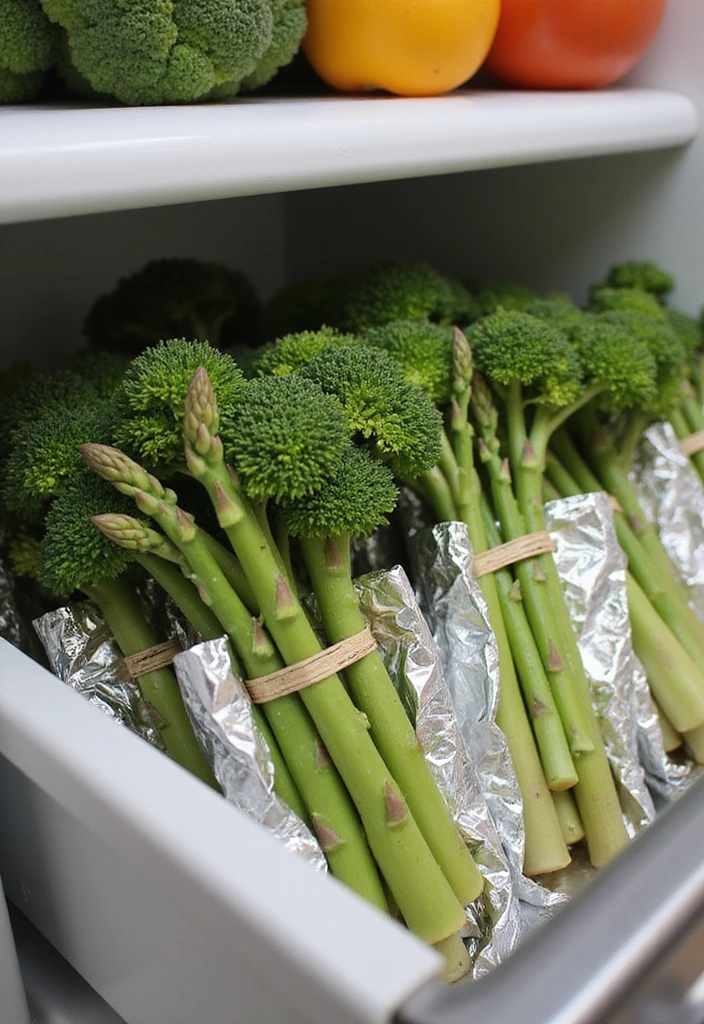
Did you know wrapping your produce in aluminum foil can actually prolong its life?
Fruits and vegetables like asparagus, broccoli, and potatoes benefit from this method because it allows them to breathe while preventing moisture loss.
– For asparagus, wrap the bottom ends in foil and place upright in the fridge for extended freshness.
– Wrap broccoli loosely in foil to maintain its crispness for longer.
– You can also save the foil afterward for recycling!
This is a quick tip that can lead to less food waste and fresher ingredients for your next meal.
5. Freeze for Later
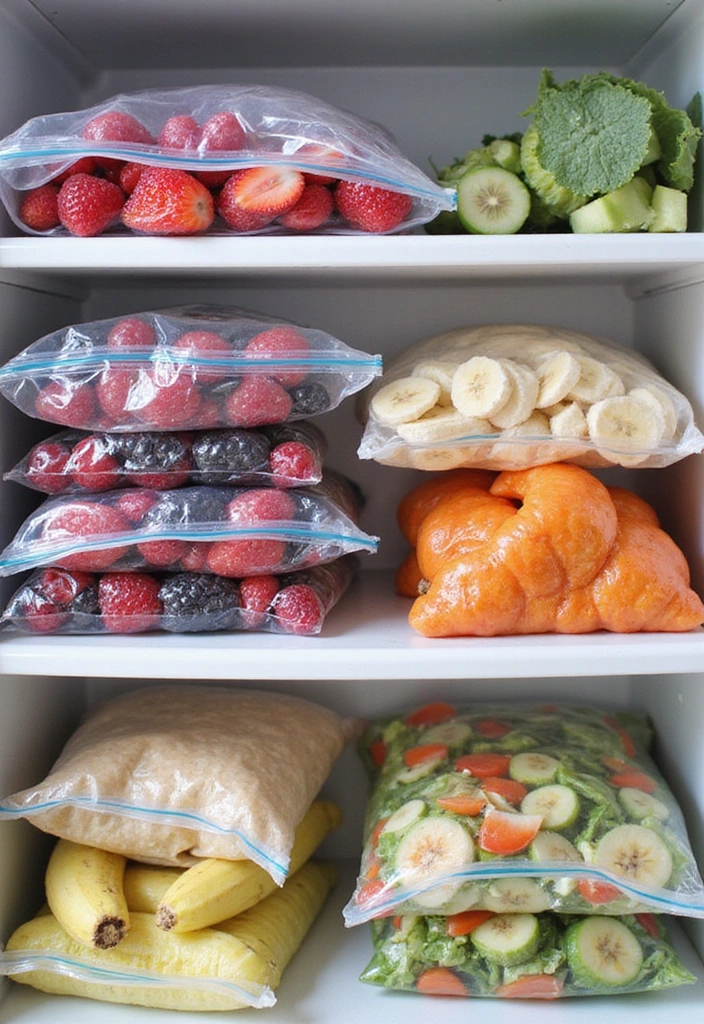
Freezing is one of the best ways to preserve the freshness of fruits and vegetables.
By storing them in the freezer, you lock in flavor and nutrients, making them perfect for smoothies, soups, and stews later on.
– Wash and slice your veggies before freezing to make meal prep easier when you’re ready to use them.
– Freeze fruits like bananas, berries, and mangoes on a baking sheet before transferring them to airtight bags so they don’t stick together.
– Use ice trays for herbs in olive oil for easy cooking additions later.
Freezing your produce not only saves you money but also ensures you always have fresh ingredients at hand.
6. Use a Salad Spinner
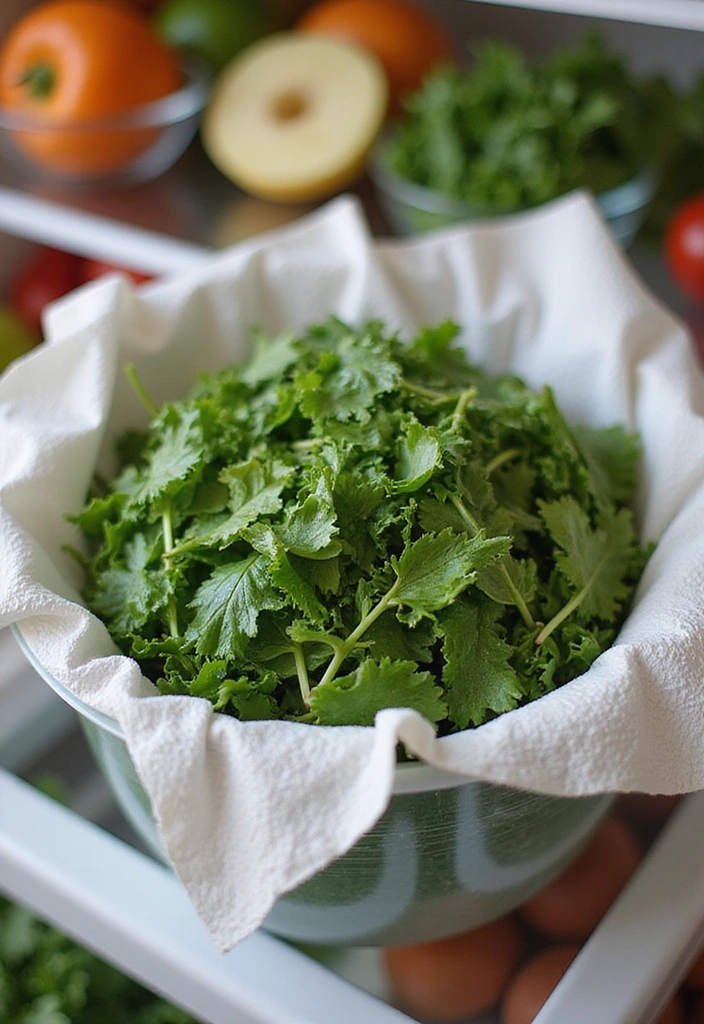
A salad spinner isn’t just for drying greens; it can also help store them properly!
After washing your salad greens, give them a spin to remove excess water and then layer them between paper towels inside the spinner to absorb moisture. This will help keep your greens crisp and fresh.
– Store the spinner in your fridge for easy access to clean greens.
– Use the spinning basket to store cut veggies as well, keeping them from wilting quickly.
– Rotate your greens regularly to avoid them going bad.
This little tool is a game changer for keeping your salads fresh and ready to go!
7. Smart Shelf Placement
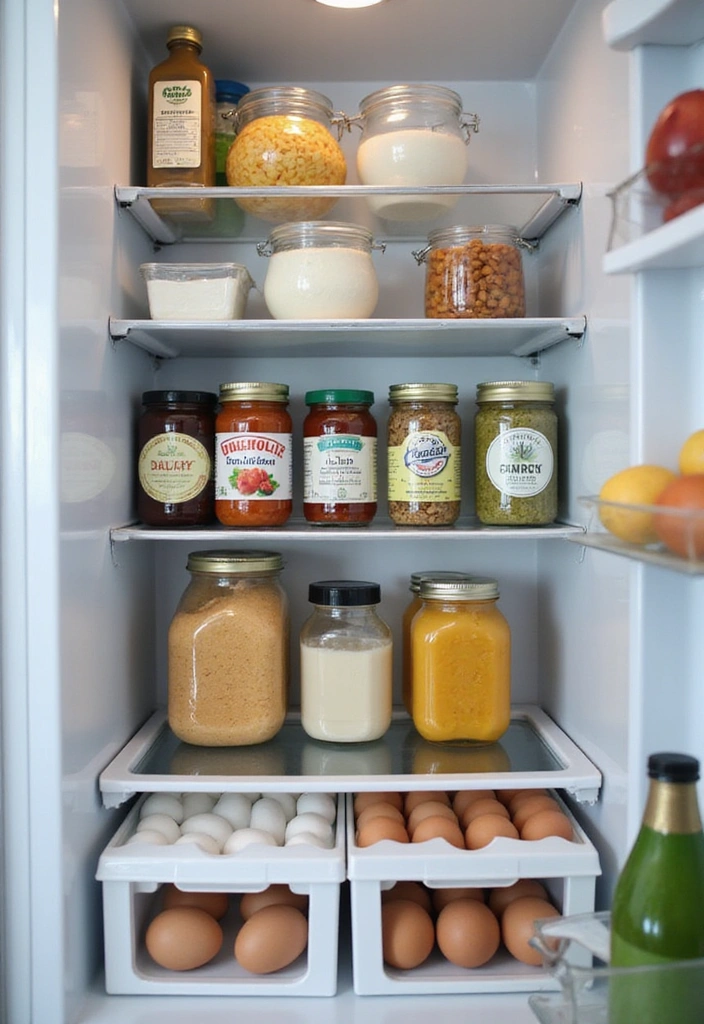
The way you arrange items in your fridge can greatly affect how fresh they remain.
Top shelves are typically the warmest, while the bottom shelves are the coldest, making them ideal for storing perishables.
– Place dairy, eggs, and items that need consistent cold temperatures on the bottom shelves.
– Store condiments and other foods that withstand slight temperature changes on the top shelves.
– Avoid overcrowding to ensure proper airflow and cooling.
Proper placement is a small adjustment that can lead to big freshness results.
8. Keep Your Fridge Clean

A clean fridge is a happy fridge!
Regularly cleaning your refrigerator can help maintain an optimal environment for your fruits and vegetables, preventing odors and mold.
– Wipe down shelves and surfaces with a baking soda solution to keep everything fresh.
– Regularly check for expired items and toss any wilted produce before it spreads.
– Invest in fridge liners to keep spills from soaking into surfaces and to make cleaning easier.
Establishing a routine cleaning schedule can keep your fridge in tip-top shape, helping your produce stay fresh longer.
9. Use a Lazy Susan
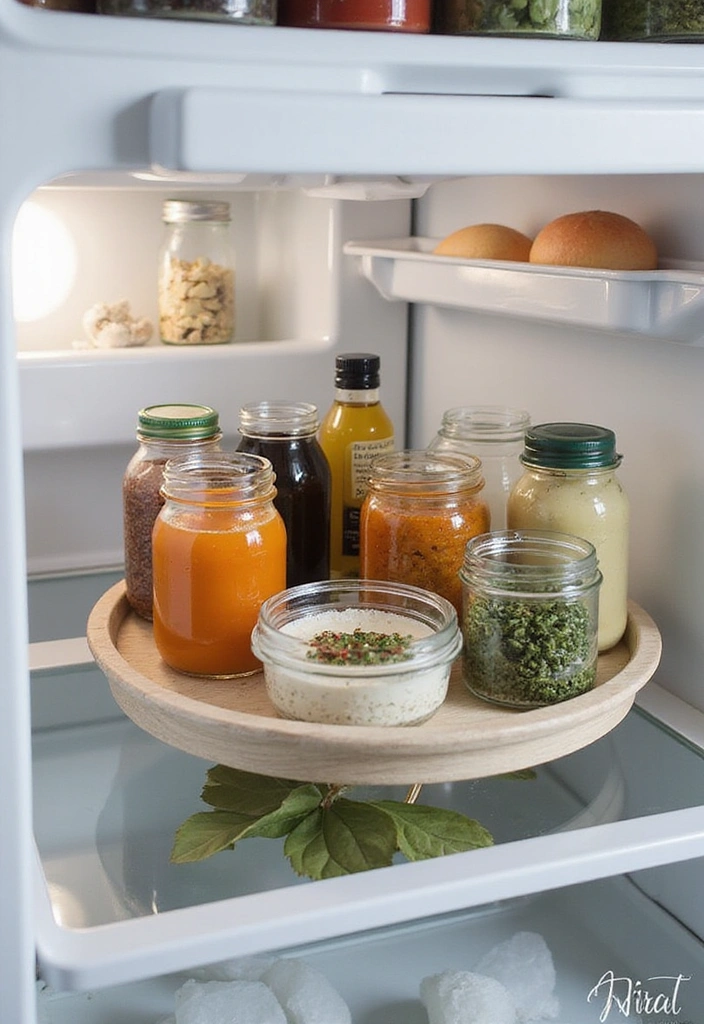
Lazy Susans aren’t just for dining tables!
In your fridge, they can be a life changer for organizing condiments and smaller items.
– Place one on a shelf to easily rotate and access items without digging around.
– Use it for things like salad dressings, sauces, or even small snack items.
– Consider having one specifically for your fresh herbs and smaller veggies for easy access.
This simple addition can streamline your fridge and save time, making meal prep a breeze.
10. Revitalize Old Produce
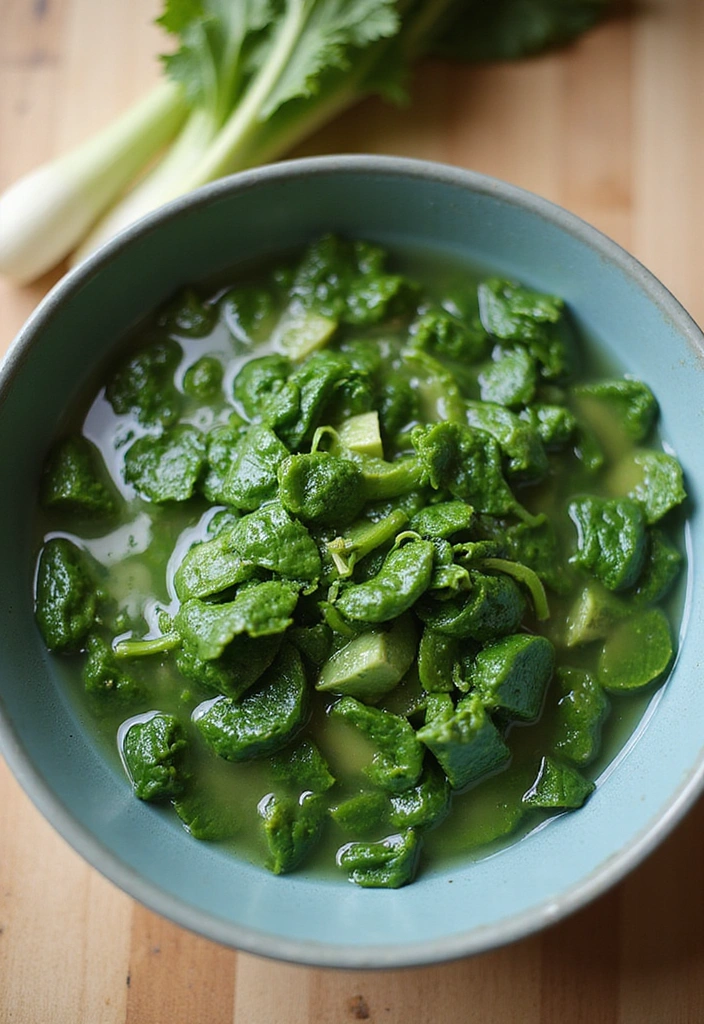
Got some limp veggies or sad-looking greens? There’s hope!
Revitalizing old produce can save you money and reduce waste, turning those wilted greens into a fresh salad.
– Soak wilted greens in cold water for about 30 minutes to bring them back to life.
– For slimy veggies, rinse them off and dunk them in an ice bath for a refresh.
– Use any limp veggies in soups or stir-fries instead of tossing them.
Learning to revive your produce not only feels good but can also add zest to your meals!
11. Citrus Preservation Tips
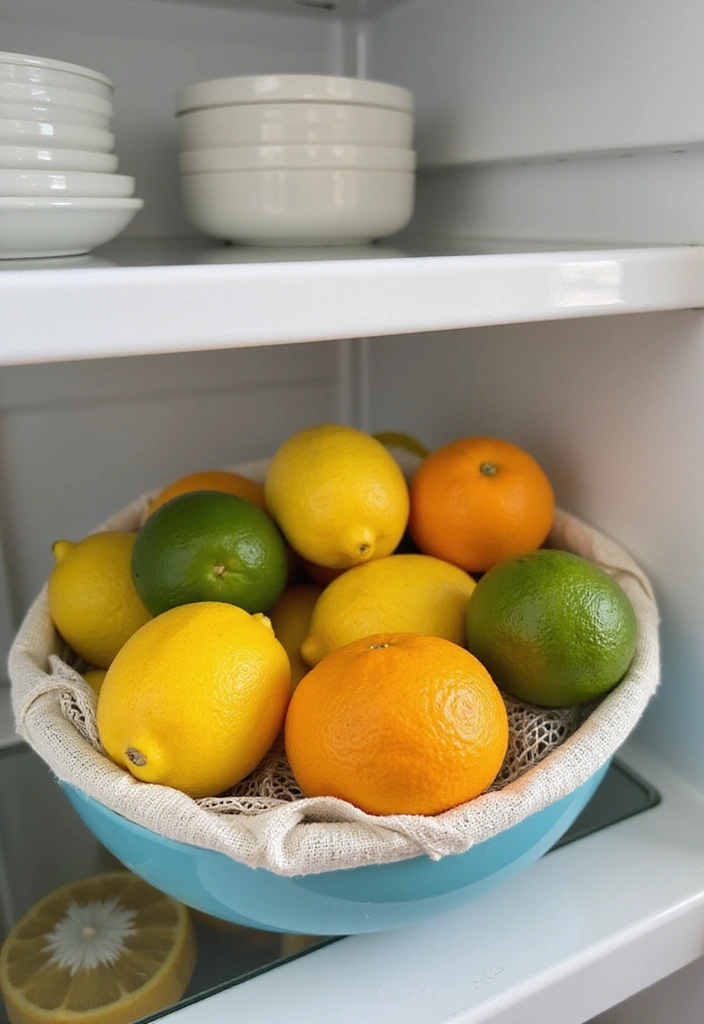
Citrus fruits are a staple in many kitchens, but they can spoil quickly if not stored correctly.
To keep them fresh and juicy, consider these tips:
– Store lemons, limes, and oranges in the fridge instead of the countertop.
– Use mesh bags to allow airflow and prevent moisture buildup.
– Squeeze some juice into ice trays for easy future flavoring in recipes or drinks.
Utilizing these tips can ensure your citrus remains zesty and ready for use whenever you need!
12. Use a Food Dehydrator
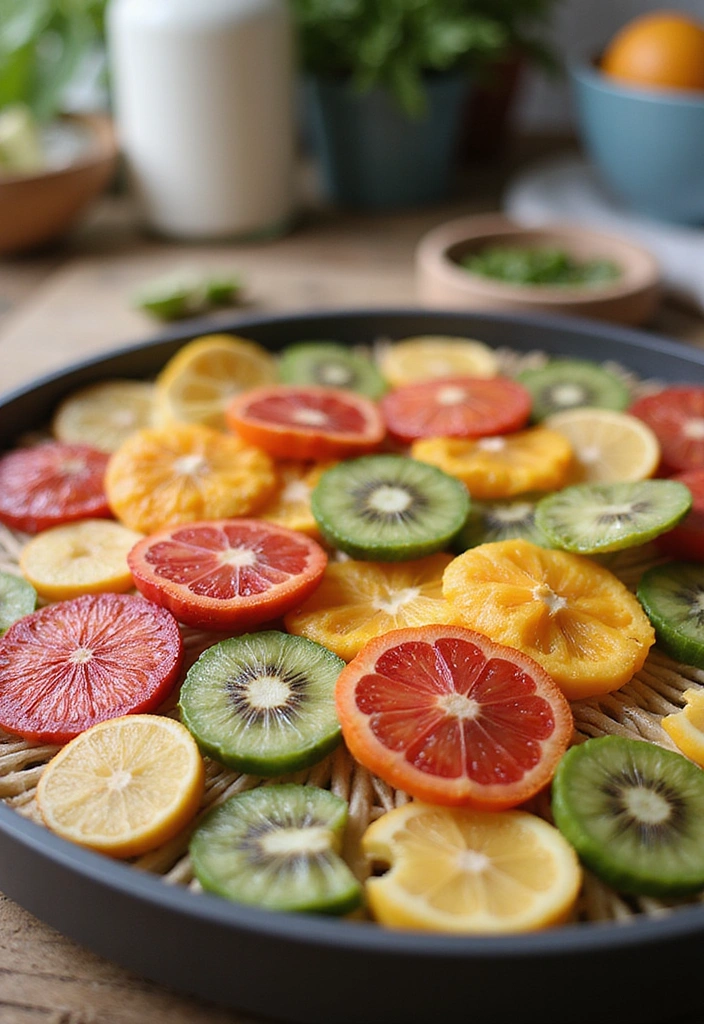
Investing in a food dehydrator can be a game changer for preserving fruits and veggies.
Dehydration removes moisture and extends the life of your produce significantly, making them great for snacks or cooking later.
– Slice fruits like apples or peaches and let them dry for healthy snacking.
– Dehydrate seasonal veggies to enjoy their flavors all year long.
– Store your dried produce in air-tight containers to maintain their quality.
This handy kitchen gadget opens up a whole new world of food preservation!
13. Vegetable Broths from Scraps

Don’t let valuable scraps go to waste!
Use leftover vegetable scraps to create delicious broths that can be stored in your fridge or freezer for future meals.
– Collect carrot tops, onion skins, and celery ends in a container.
– When you have enough, simmer them in water for a rich broth.
– Store the broth in jars for quick and easy soup bases or cooking liquids.
This sustainable approach helps you reduce waste while providing flavorful additions to your meals!
14. Produce Pads for Longevity
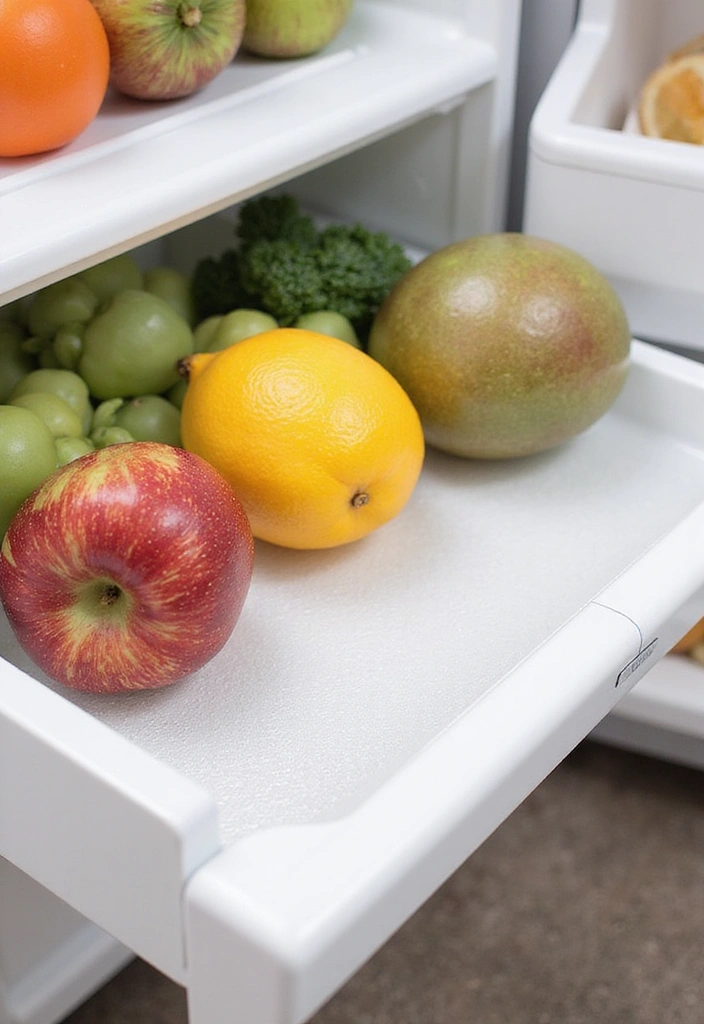
Consider using produce pads to extend the life of your fruits and vegetables.
These specially designed pads absorb excess moisture and control humidity, creating ideal storage conditions.
– Place them in drawers or containers to keep your produce fresher, longer.
– They’re particularly beneficial for items like mushrooms, berries, and leafy greens.
– Make sure to regularly replace them for optimal effectiveness.
By utilizing these pads, you’re giving your produce the best chance at lasting freshness!
15. Color-Coding for Easy Access
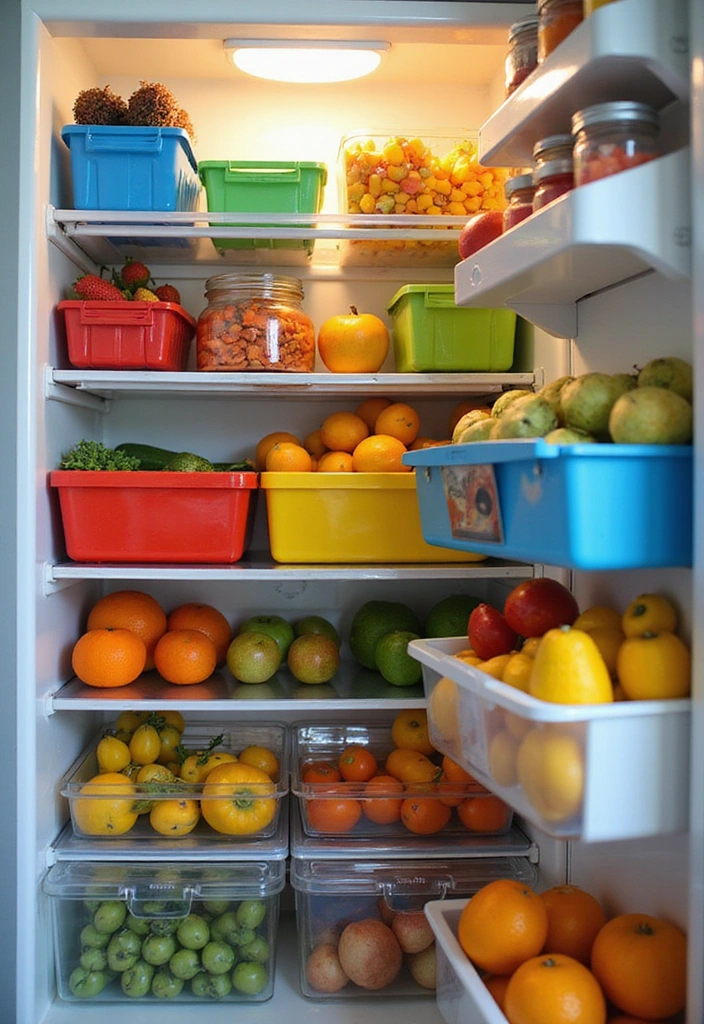
Add a splash of color to your fridge organization with color-coding!
This fun method can simplify your searches for fresh produce and help you maintain inventory.
– Use colored containers or labels to categorize items: green for vegetables, red for fruits, etc.
– Consider using colored bins for salads, snacks, and meal prep items.
– Create a visual map of where everything is located for the whole family.
Not only will your fridge look more appealing, but you’ll also spend less time searching for ingredients!
16. Repurpose Old Jars
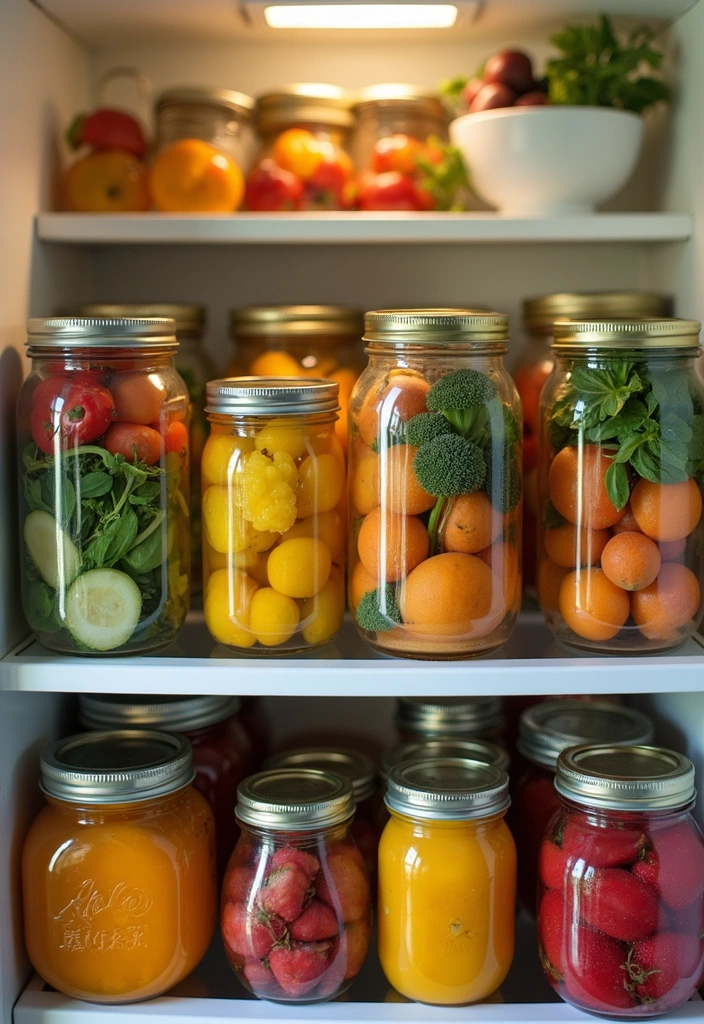
Don’t toss those old jars!
Repurposing them can be a fun and practical way to store produce.
– Use glass jars for storing cut fruits, leafy greens, or even salad dressings.
– They’re also great for herbs, keeping them fresh and visible.
– Label the jars to remind you what’s inside and the date it was stored.
This eco-friendly approach not only reduces waste but also adds a rustic charm to your fridge!
17. Keep Avocados on a Low Shelf
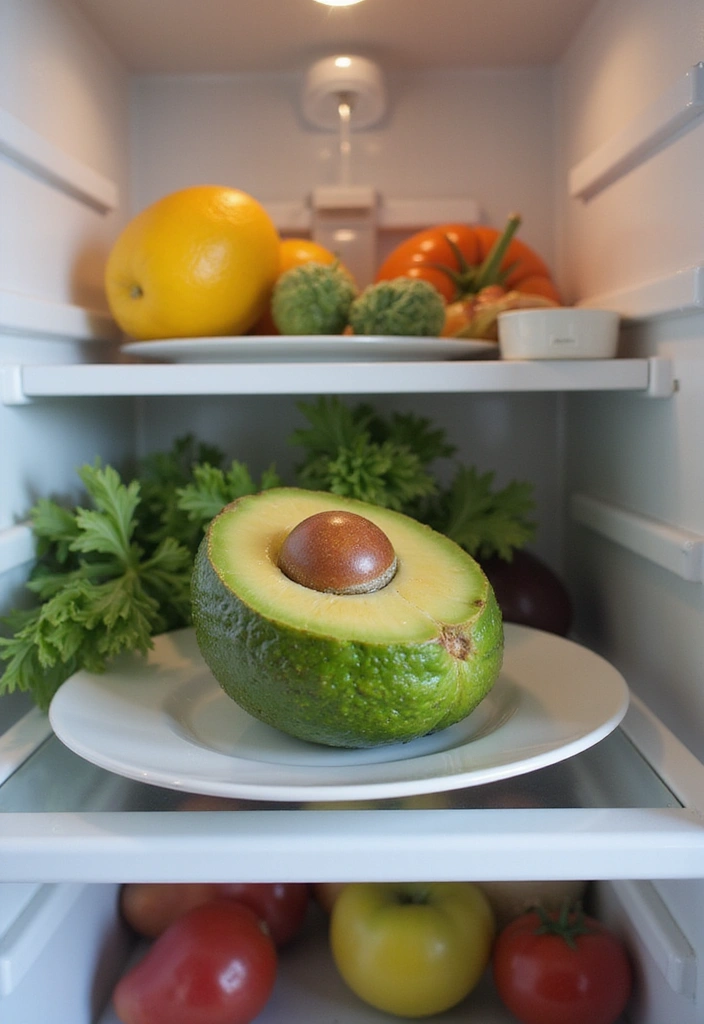
Avocados are a favorite for many, but they require special storage to prevent them from going bad too quickly.
Storing avocados on a low shelf in your fridge can help maintain their ideal texture and ripeness.
– If you have hard avocados, keep them at room temperature until they ripen.
– Once ripe, move them to the fridge to slow down the ripening process.
– Consider wrapping cut halves in plastic wrap to keep them fresh for an extra day.
By following these tips, your avocados can stay perfect for your next avocado toast or guacamole!
18. Composting for Outdated Produce
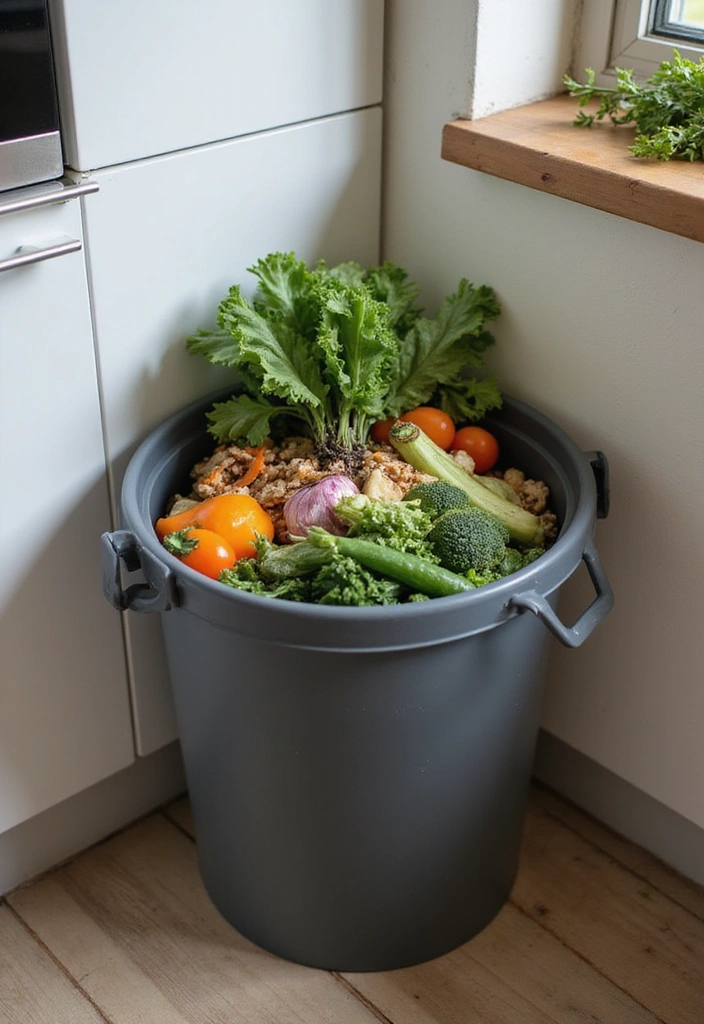
When produce goes bad, instead of tossing it in the trash, consider composting!
This eco-friendly method helps reduce waste and provides nutrients for your garden or plants.
– Set up a compost bin in your kitchen for scraps, wilted greens, and other organic materials.
– Keep a separate container in your fridge for collecting scraps.
– When it’s full, transfer the contents to your outdoor compost pile.
Not only does this practice benefit the environment, but it can also lead to beautiful homegrown veggies or flowers!
19. Invest in Fridge Thermometer
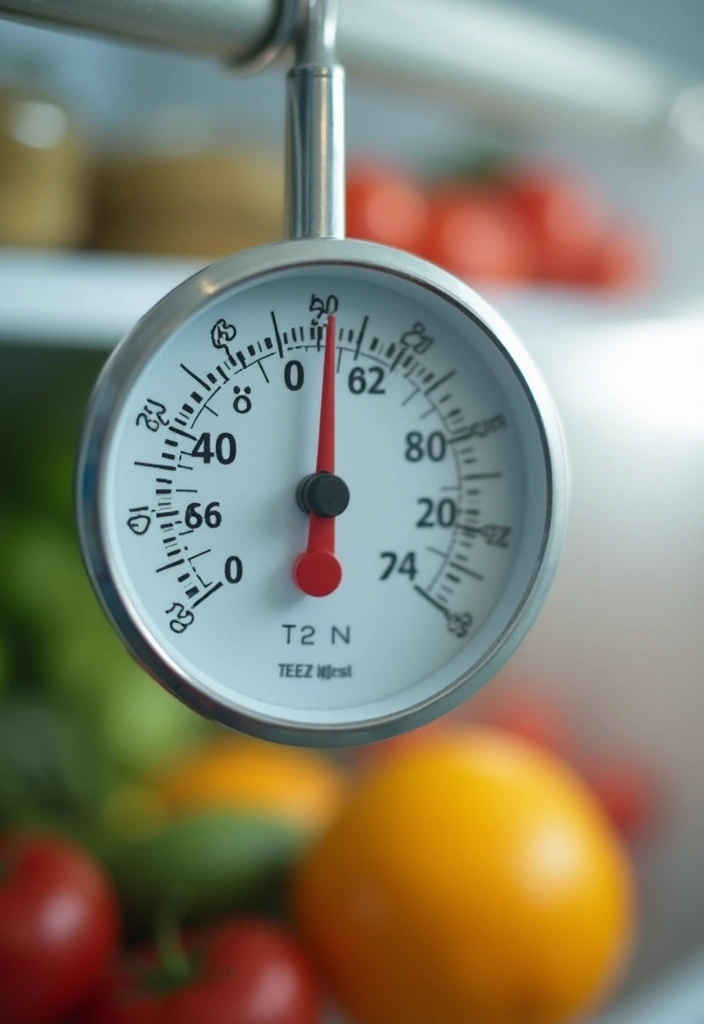
Sometimes, it’s the little things that make a big difference!
A fridge thermometer can help you maintain the optimal temperature for food preservation.
– The ideal temperature for a fridge is between 35°F and 38°F (1.7°C – 3.3°C) to keep your produce fresh.
– Regularly check the thermometer to make sure your fridge is operating within this range.
– Adjust the settings as needed to avoid spoilage.
This small investment can significantly improve the longevity of your fruits and veggies.
20. Rotate Your Produce
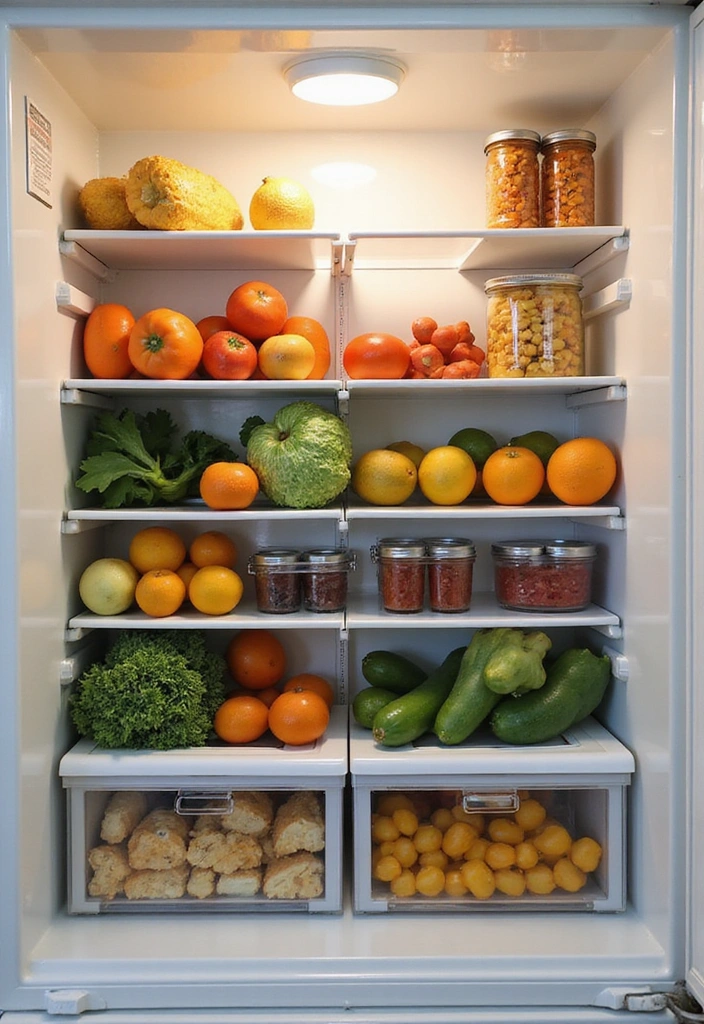
Just like in grocery stores, rotating your produce ensures you use the older items first, minimizing waste.
– When you bring in new groceries, move the older produce to the front.
– Keep track of dates to avoid having forgotten items at the back.
– Establish a ‘first in, first out’ system to manage your food efficiently.
This simple approach to organization can enhance your refrigerator experience and keep your produce fresher longer!
21. Embrace Seasonal Eating
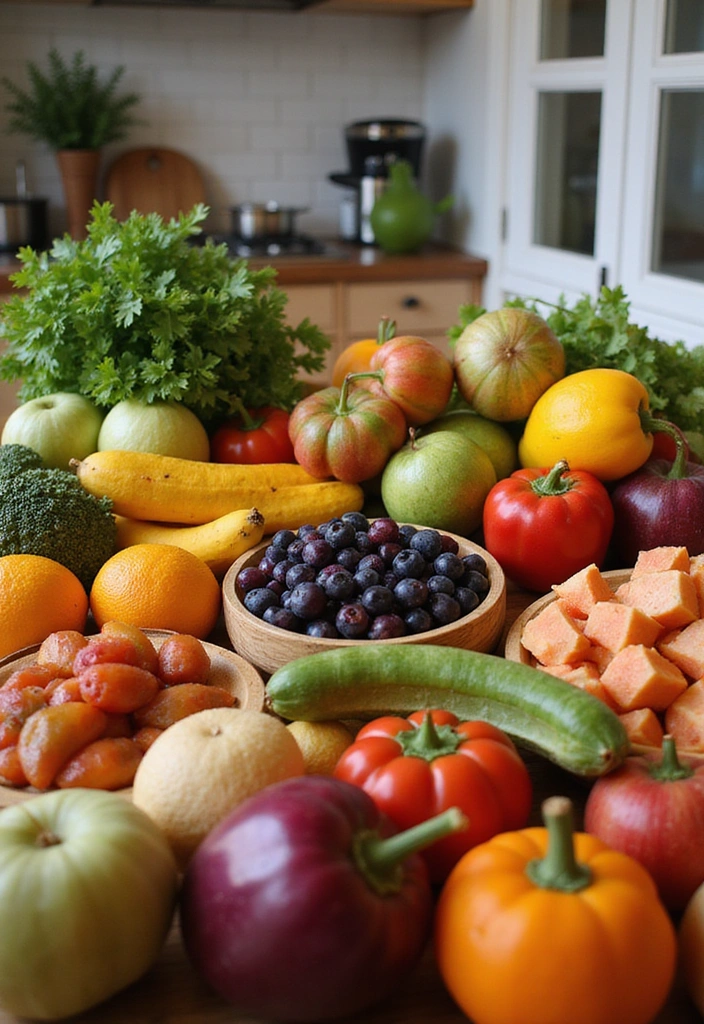
One of the best ways to enjoy fresh produce is by eating with the seasons.
Not only does this support local farmers, but it also ensures you’re getting the freshest and most flavorful ingredients.
– Research what fruits and vegetables are in season in your area.
– Plan your meals around these seasonal foods to enjoy the best flavors.
– Store your seasonal produce correctly to maintain freshness.
By embracing seasonal eating, you not only support your health but also enjoy the bounty of nature!
Conclusion
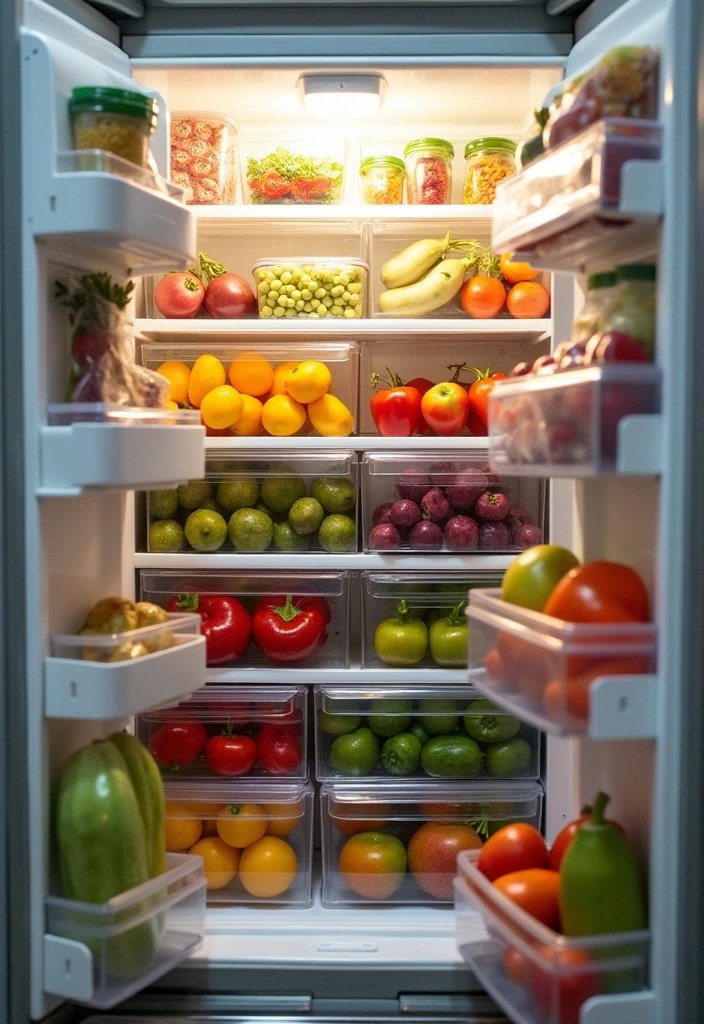
Embracing these 21 refrigerator organization hacks is your ticket to maintaining fresh fruits and veggies!
By thoughtfully arranging and storing your produce, you not only reduce waste but enhance your cooking experience as well.
Try a few of these ideas and see how they transform your fridge into a fresh food haven!

